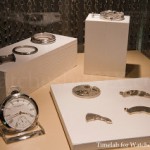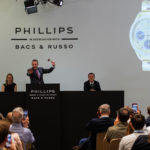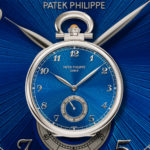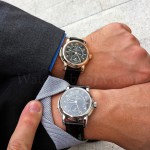Editorial: Geneva Auctions Fall 2024
Special prices for special watches.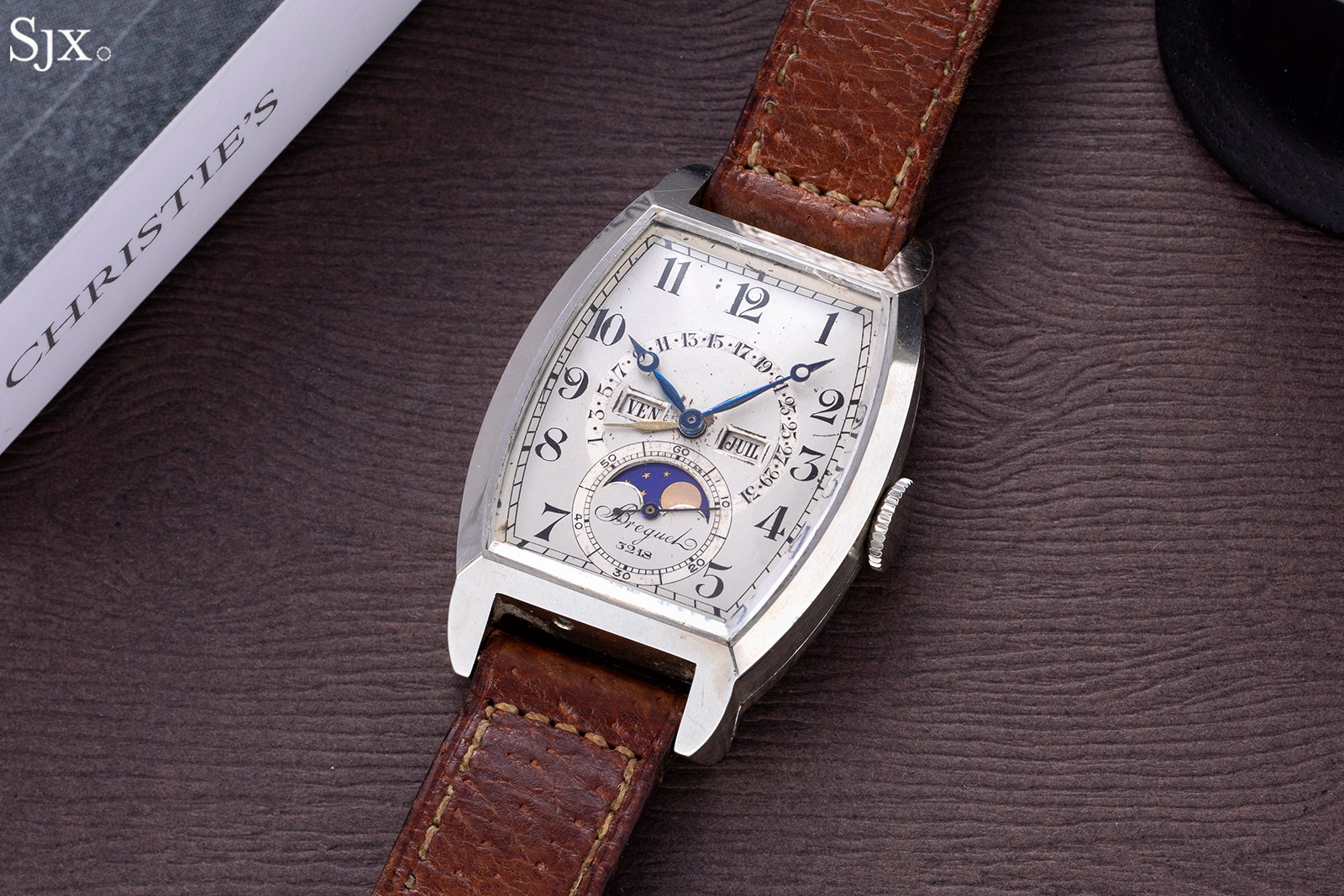
Perhaps the most surprising moment of the fall auction season in Geneva was when the hammer came down on an MoonSwatch at Christie’s for CHF69,300 including fees – exactly the same as a Rolex GMT-Master II “SARU” that sold later in the day.
But as is almost always the case with record prices at auction, there was a story behind the price and a method to the madness. The MoonSwatch was the unique “millionth” example conceived specifically for this auction, where all proceeds went to ELA, a French medical charity.
The ELA sale was spearheaded by Francois-Henri Pinault, the chief of Kering, the luxury conglomerate that owns Christie’s, and certainly one of the most influential people in the luxury goods business. Sitting in the room and opening the sale was Mr Pinault’s fellow trustee at ELA, Zinedine Zidane, the French footballer better known as Zizou who’s regarded as one of the all-time best players and coaches.
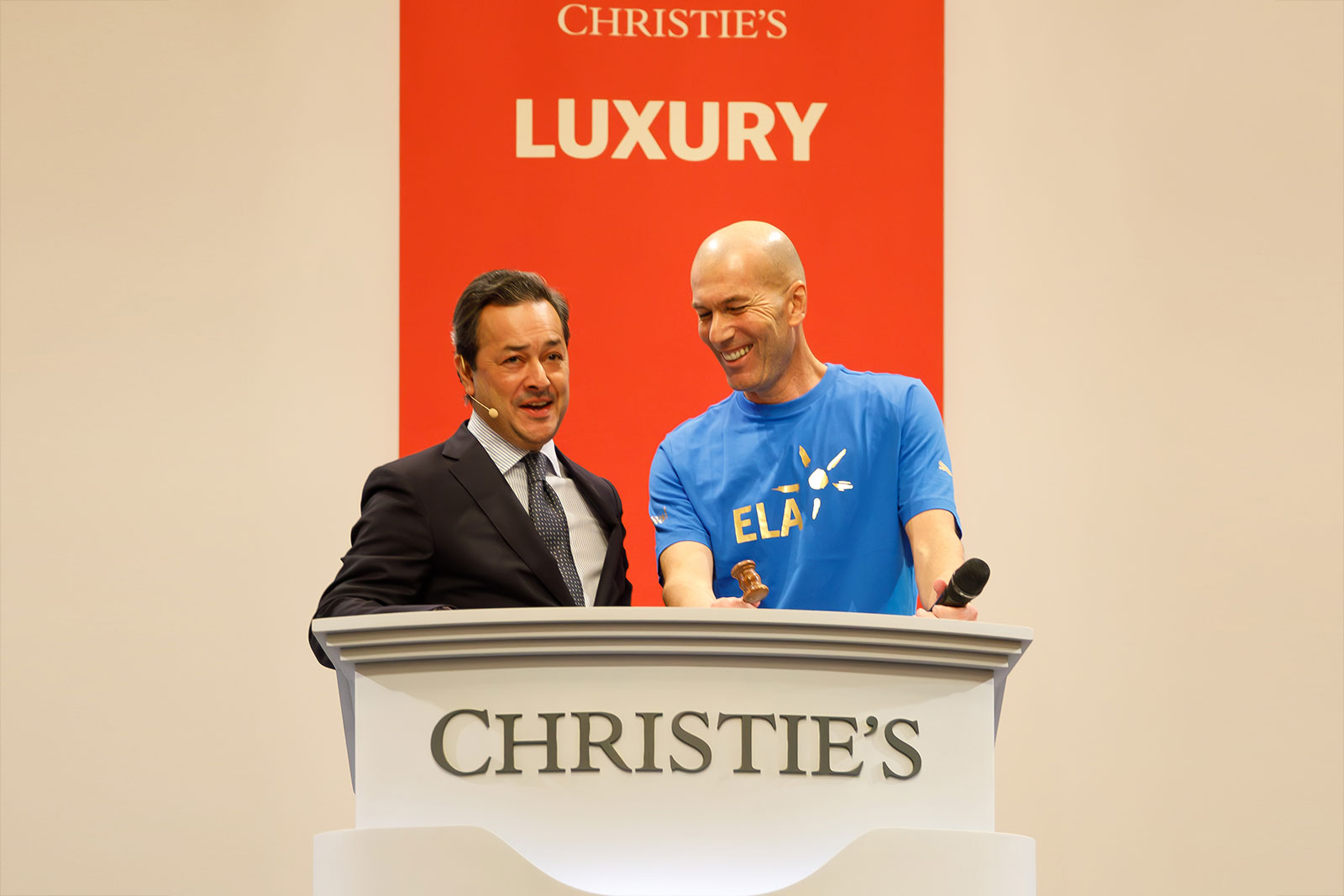
Christie’s auctioneer Rahul Kadakia with Zizou. Image – Christie’s
Bidding via phone, the winning bidder of the MoonSwatch – which sold for over 150 times the retail price – announced to the room via a Christie’s rep that his winning bid was for “ELA and Zizou”. It was clearly a statement that he or she would have paid up for whatever watch was on sale, regardless if it was plastic or precious metal. It was a good deed done that was no bearing on the MoonSwatch or watches in general.
To the moon
MoonSwatch aside, the season was positive in terms of sentiment. The atmosphere was clearly more positive than that during the spring auctions, echoing the feeling in financial markets and crypto after the American presidential election. Not only was attendance more substantial, it felt like buyers were more willing to bid – albeit selectively.
It’s clear that the go-go years of the pandemic are well behind us and the watch market in general is down compared to before, both in terms of prices and demand. As a result, the bold, brave, or blind can pick up bargains, as happened this season in Geneva. This is especially so for certain modern watches and vintage timepieces in poor shape. For example, a very worn Patek Philippe ref. 2499/100 sold for just CHF441,000 with fees at Christie’s, less than half what a pristine example would fetch.
But for truly special watches, the revived animal spirits in the financial markets clearly worked their magic. Such watches tended to outperform this season, by several orders of magnitude in some cases.
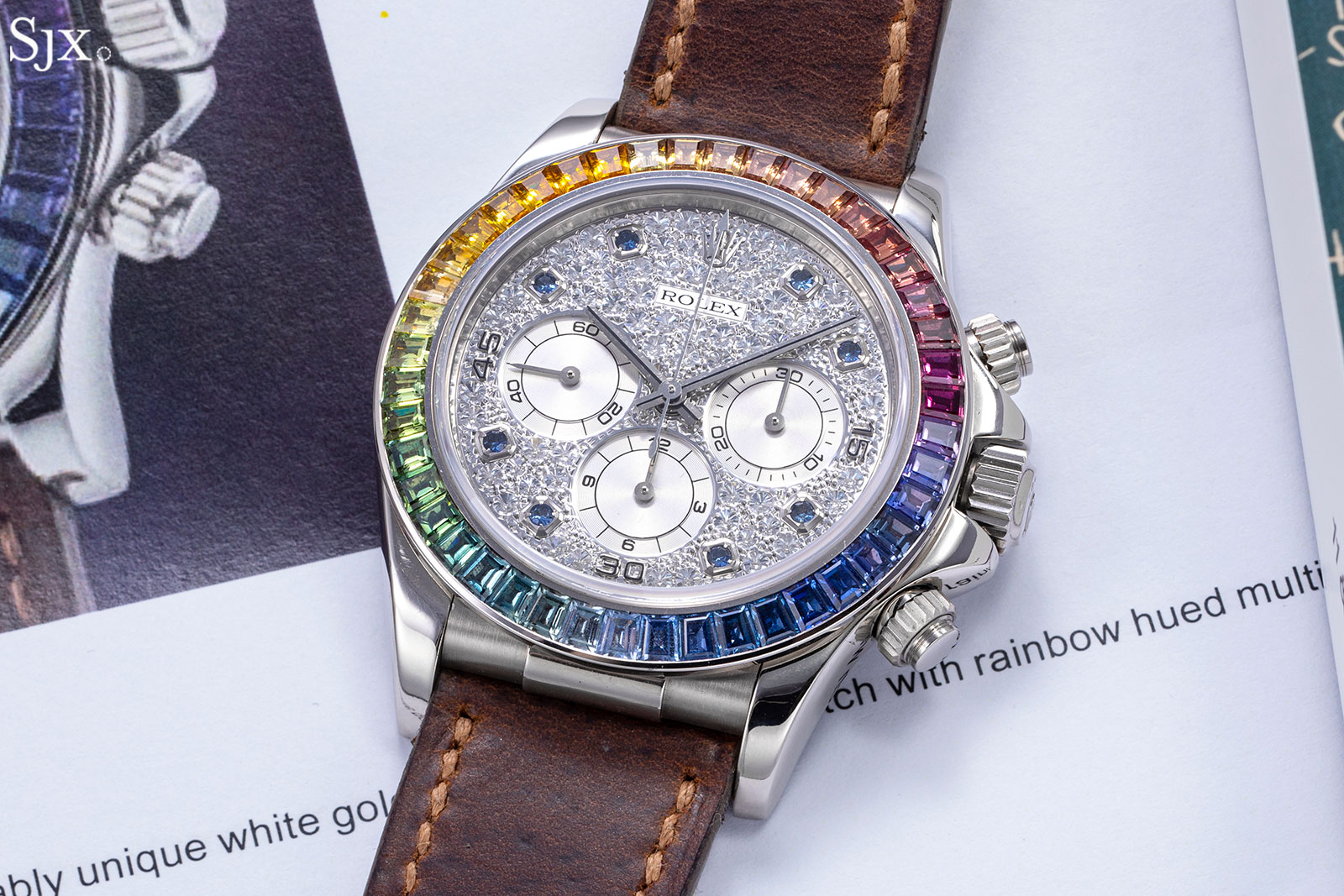
Selective bidding saw Rolex Daytona “Rainbow” 16599SAAEC sell for CHF5.51 million with fees at Phillips
At Christie’s, for instance, the MoonSwatch was hardly the true highlight. Instead that distinction went to the Breguet no. 3218, a tonneau-shaped watch from 1935 that’s possibly the first-ever wristwatch with a retrograde perpetual calendar. And it happens that the original owner of the watch was Coco Chanel’s lover who died at her villa just months after buying the watch.
Preserved well in honest condition, no. 3218 saw a bit of action in the room, mainly from European dealers, up to the half-million franc mark, whereupon the bidding was all done by phone. A trio of impressively determined bidders kept going until it sold for CHF1.92 million with fees. The winning bidder was represented by Jill Chen of Christie’s Hong Kong. Breguet itself, as it happens, wasn’t in the running for the watch.
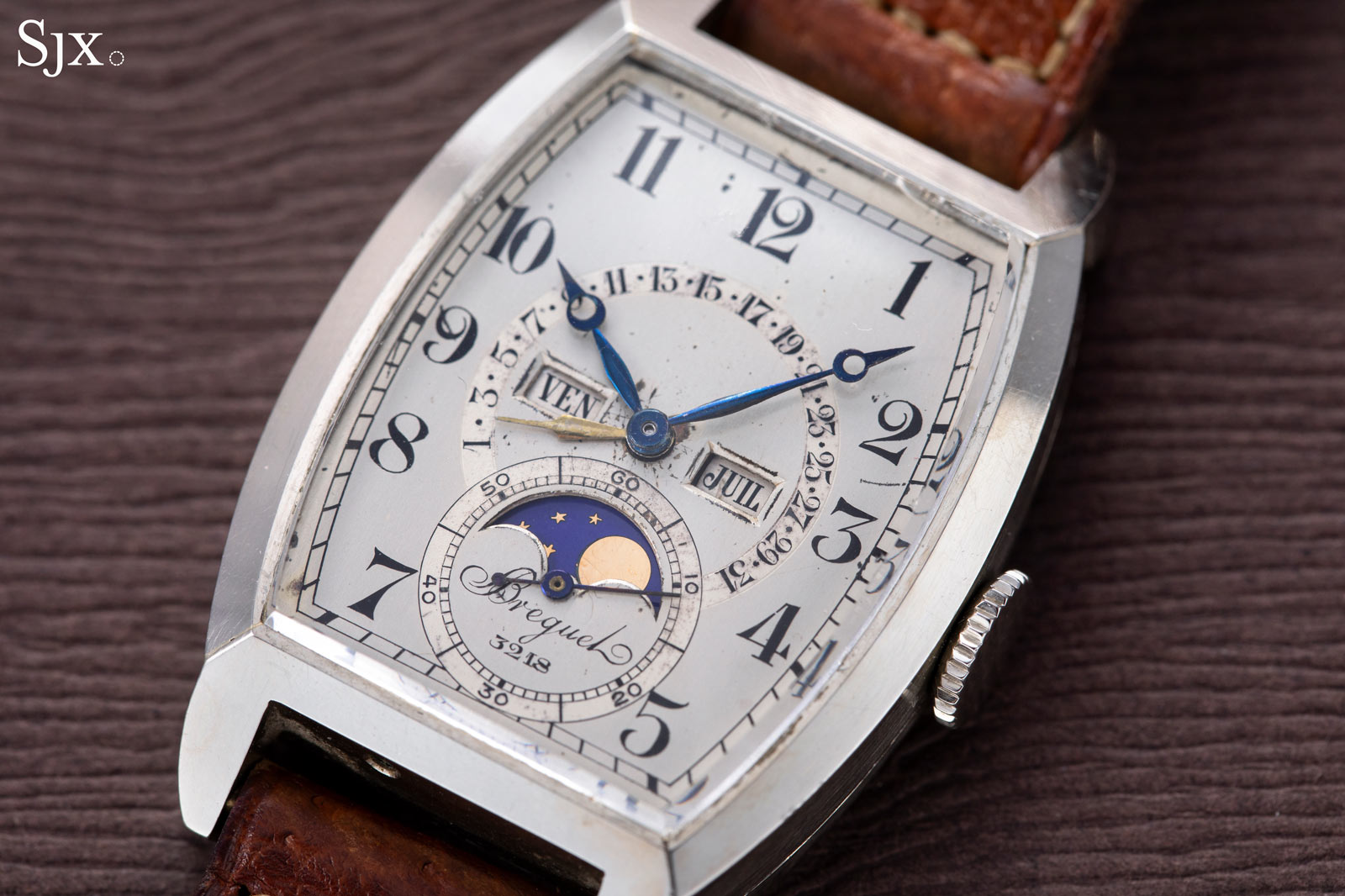
Indies up and indies down
Also at Christie’s was another notable watch but for different reasons. A Roger W. Smith Series 2, Edition 3, white gold and no. 03 made in 2010, sold for just CHF252,000 with fees. That’s about a third of its pandemic peak and less than the current retail price, which got to where it is now after several ambitious price hikes in recent years.
The last time I covered a Roger W. Smith watch in detail was in 2019, after which I continued to respect the man and his work – and still hope to own one of his watches – but was increasingly sceptical of the brand’s pricing strategy. Being early is as good as being wrong, but now it appears that watch enthusiasts who are able and willing to buy one are starting to feel the same.
Over at Phillips, it was great contemporary independent watchmaking, but of an entirely different magnitude.
With an estimate of over CHF 2 million, the F.P. Journe Tourbillon a Remontoir d’Egalite “15/93” went on the block with an opening bid of CHF1 million. Before Aurel Bacs could take bids from any of the half dozen or so phone bidders and a handful in the room, Paul Boutros of Phillips’ Americas office shouted a CHF5 million bid.
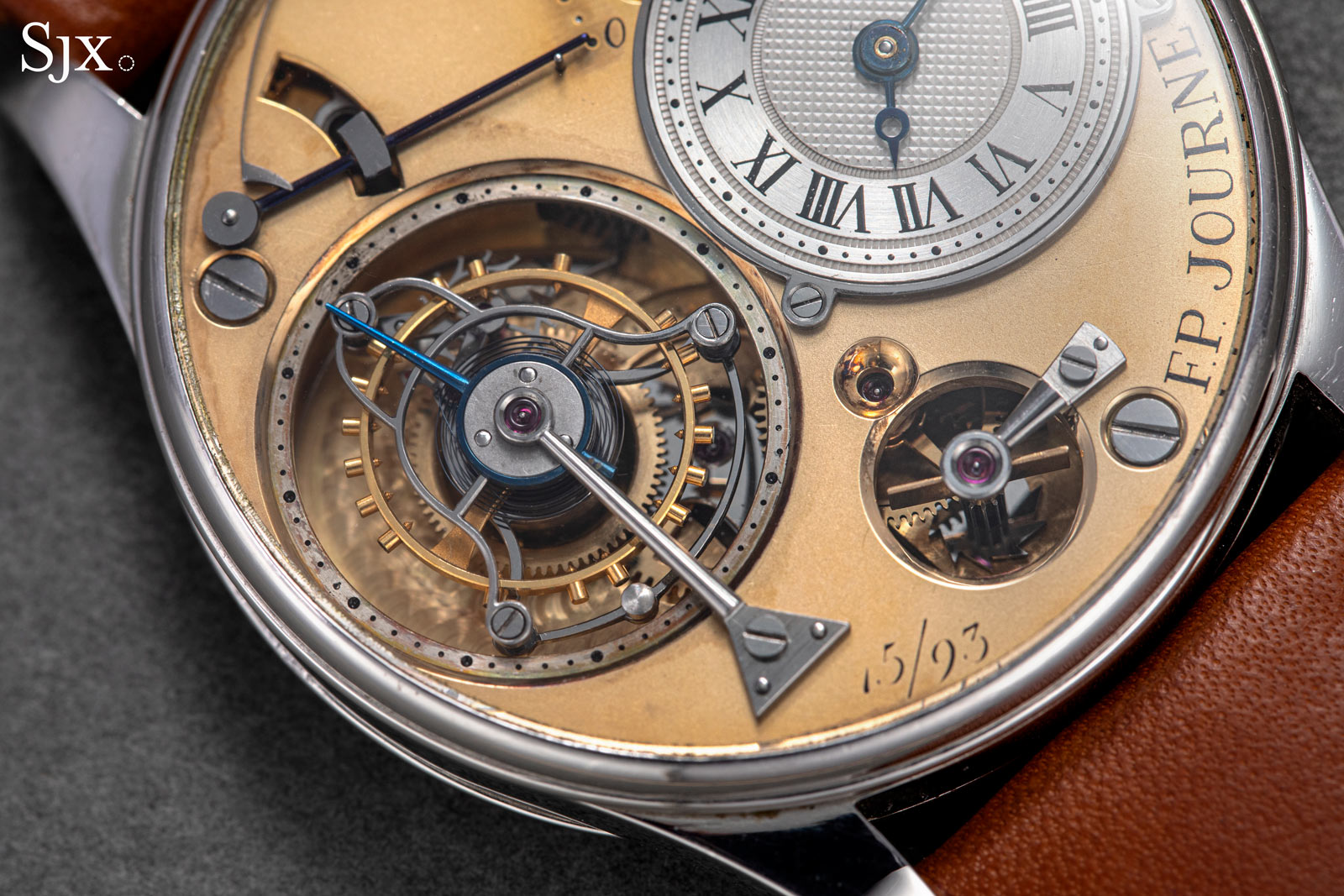
All of the built-up enthusiasm and desire swiftly evaporated as the huge bid priced out most of the contenders. However, a gentleman collector (who owns an impressive collection of independent watchmaking) raised his hand several times, turning it into a two-horse race. The phone bidder – anonymous but known as an eminent F.P. Journe collector (and certainly not Mark Zuckerberg) – won the watch with a CHF6 million bid, which means he will pay CHF7.32 million with fees.
The price sets the record for the most expensive timepiece made by an independent watchmaker, one that will likely stand for some time. More significantly, it vaults François-Paul Journe, still alive and inventing and making, in the company of brands like Rolex and Patek Philippe.
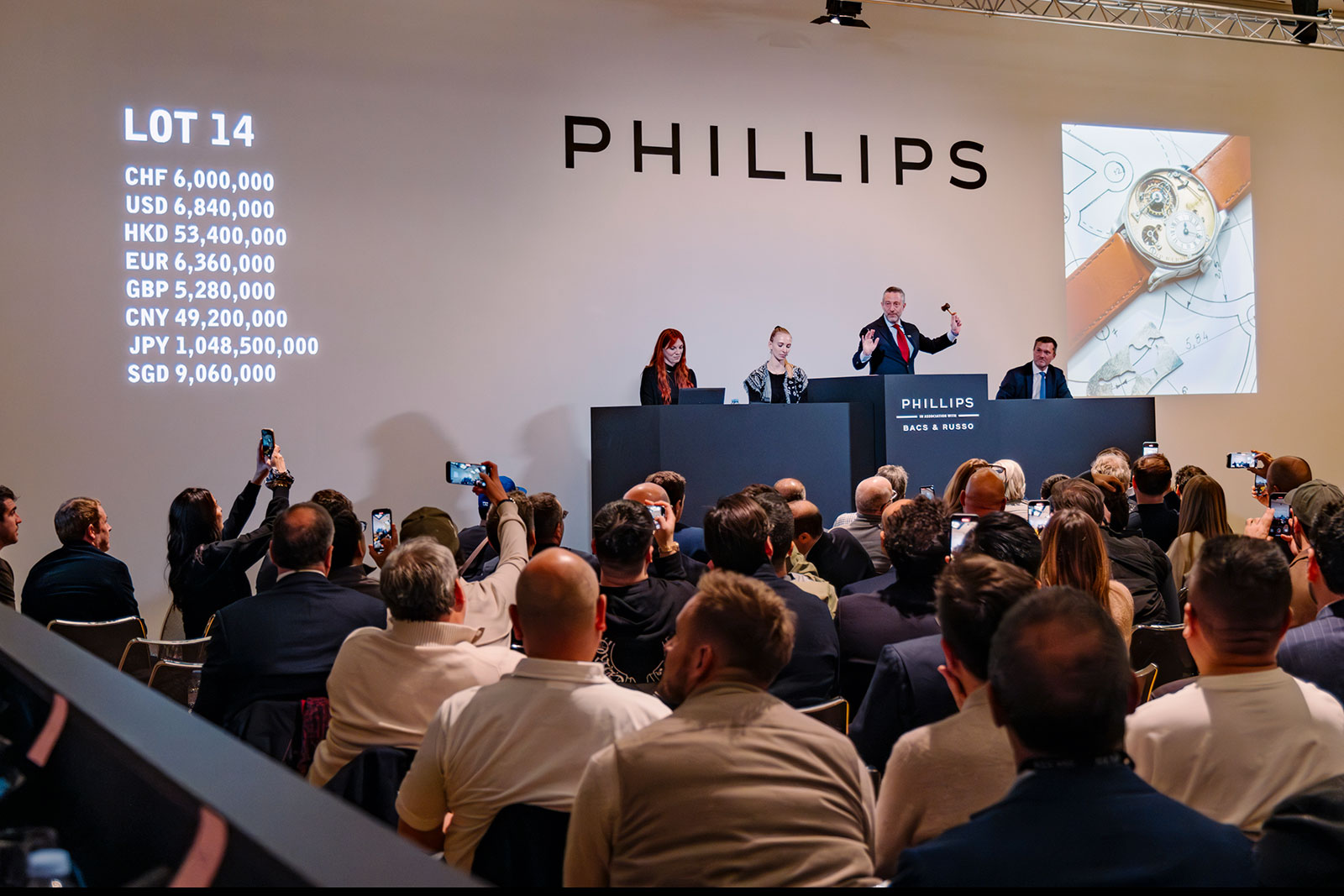
Aurel Bacs bringing down the hammer at CHF6 million. Image – Phillips
The F.P. Journe tourbillon at Phillips sold on Friday, the first day of the auction season, giving a boost to the brand’s watches across the subsequent sales. Several F.P. Journe watches sold for big sums, mostly tourbillons unsurprisingly, but one stood out, both for its rarity and the fact that is emerged as one of the most valuable lots of the season.
The final lot in Antiquorum’s sale was the F.P. Journe F.P. Journe Tourbillon a Remontoir d’Egalite no. 24. Though not one of the first 20 Souscription examples, this is essentially identical save for the lack of a serial number on the dial. Moreover, it was the last watch sold by Mr Journe himself, prior to him appointing retailers around 2000.
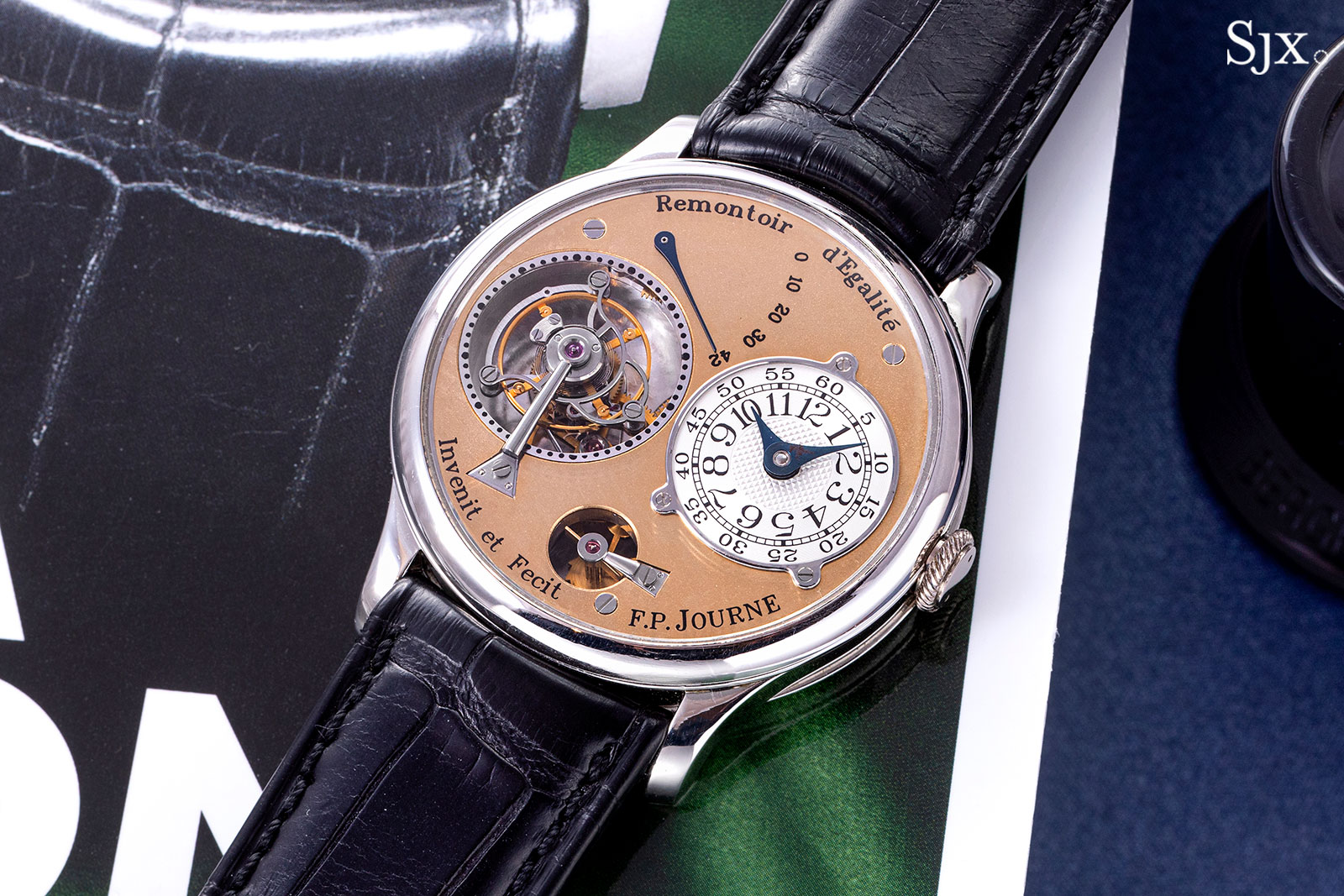
Unsurprisingly given the record price at Phillips on Friday, there were numerous bidders on this watch, mostly on the phone or online. The winning bid, however, was a written bid, meaning that someone placed a bid prior to sale – a statement of confidence and resources if there ever was one. The written bid won the watch for CHF2.93 million with fees.
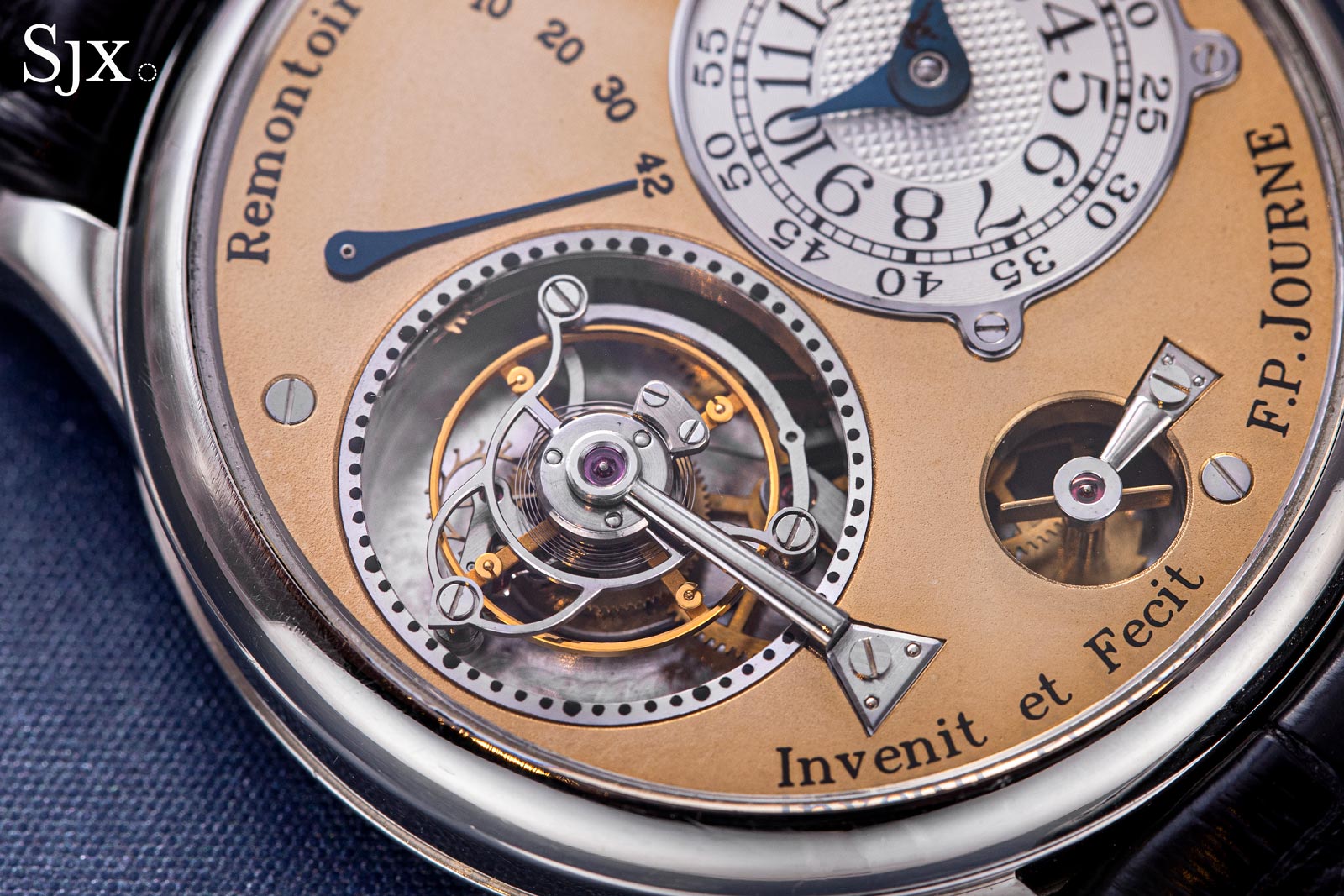
Also made by a independent watchmaker, but one long departed, was another highlight of the season. The Urban Jürgensen Oval pocket watch by Derek Pratt (and finished by Kari Voutilainen) sold for CHF3.69 million. Notably, the Oval was the third most expensive watch in the Phillips sale, after the F.P. Journe tourbillon and the Rolex Daytona “Rainbow” ref. 16599SAAEC.
An exquisite, hand-made watch that is far more significant than the sum of its parts, the Oval was the subject of a bidding war, but amongst far fewer people than most other top lots, reflecting both the niche appeal of pocket watches and its seven-figure value.
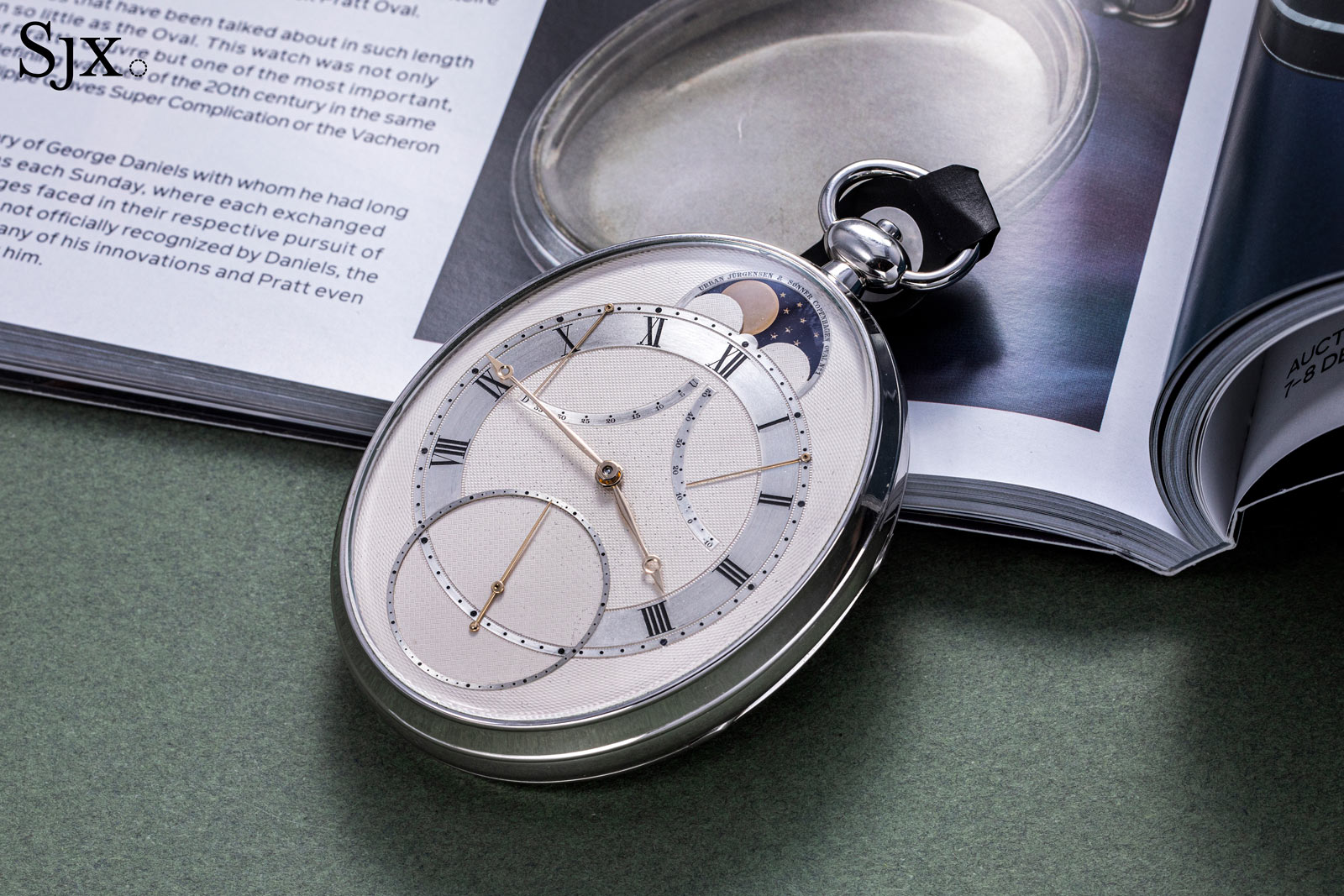
At the end, there were only two bidders, one represented by Tiffany To of Phillips’ Geneva office, and a collector from the East who was in the city but bid via phone with Alex Ghotbi of Phillips Geneva, who won the watch for his client.
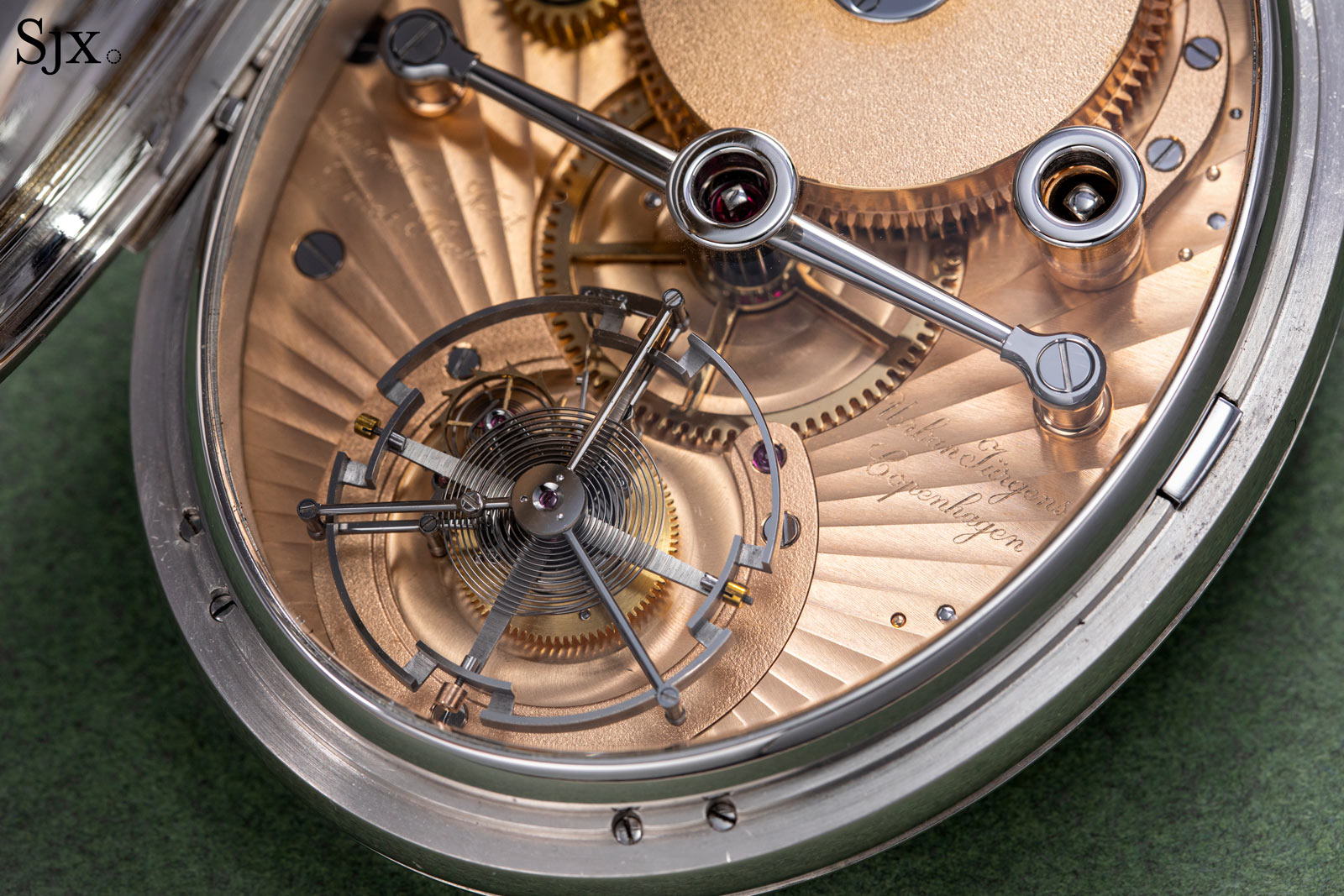
The Oval proved that truly special watches, modern or vintage, achieved spectacular and well deserved results. Over at Sotheby’s, that was demonstrated not with a watch, but by an entire collection.
Treasures of Time was a single-owner sale of 31 watches all owned by a veteran European collector. The top four lots in the sale sold – all Patek Philippe – for an astonishing CHF10.3 million with fees, reflecting the rarity and condition of the watches.
The second-most expensive lot was a finely preserved first-series ref. 2499 in pink gold that sold for CHF3.12 million, which is more or less what would be expected.
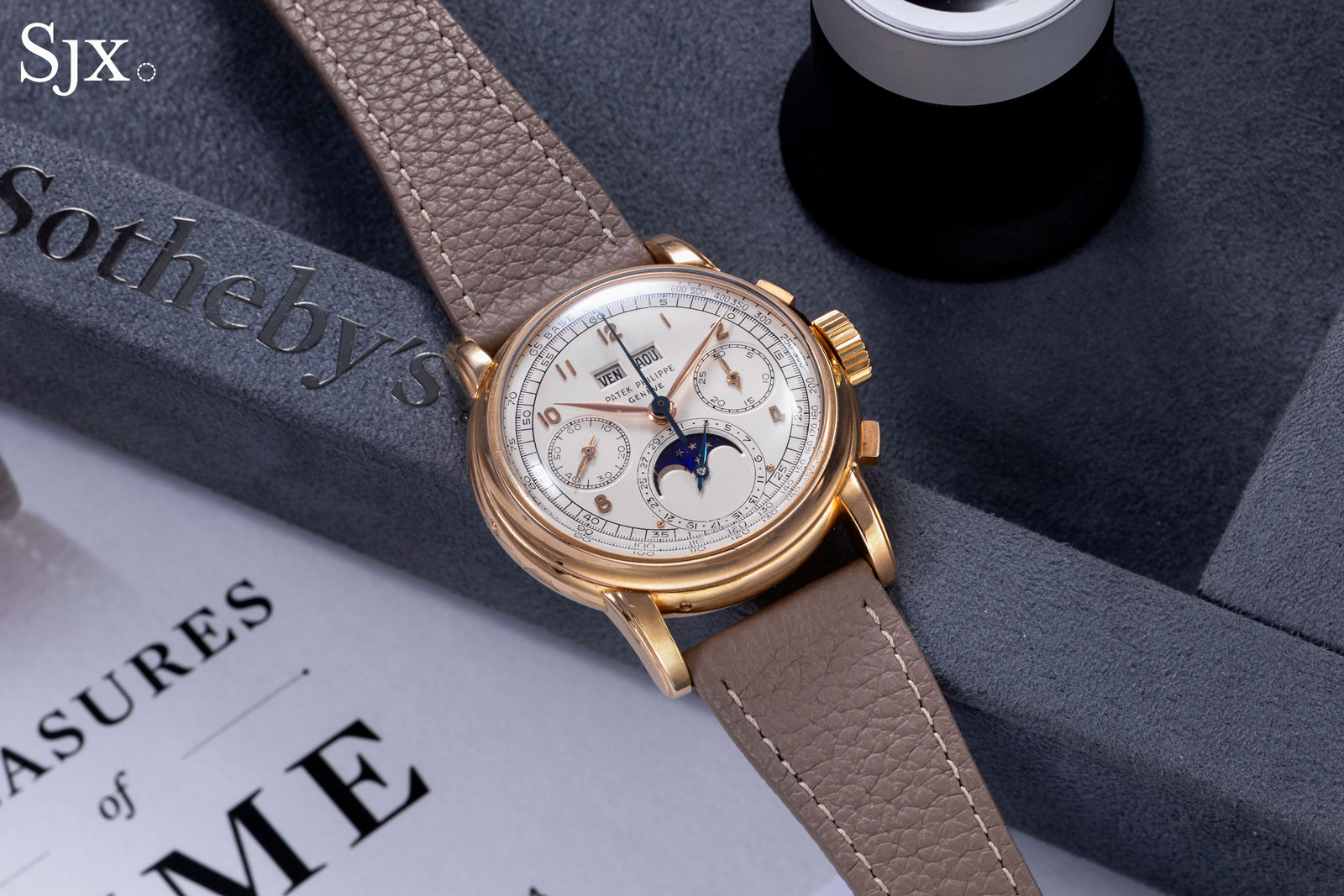
More surprising was the third-series ref. 2499 with a black dial bearing Breguet numerals. Easily the most striking of the watches in the auction, this example is in excellent condition – but the dial is a later creation installed by Patek Philippe some two decades after the watch was made. The dial, however, is gorgeous.
While in most instances that would not bode well for the price, this ref. 2499 sold for CHF2.28 million, or about double pre-sale expectations, proving its visual appeal and condition trumped an exact match with the archive extract.
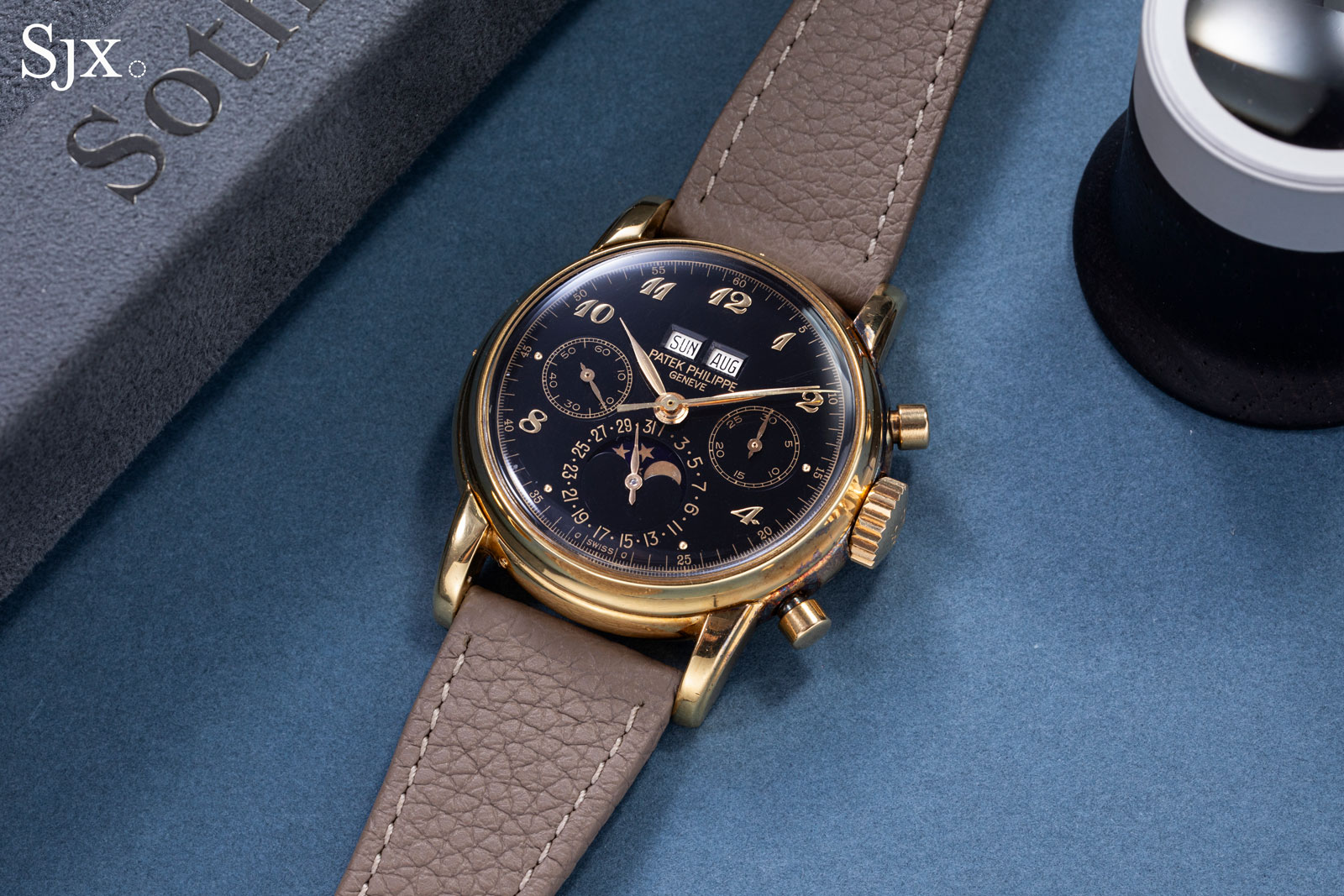
The most valuable lot in the gentleman’s collection, as it turned out, was the ref. 1563 split-seconds chronograph.
One of the rarest Patek Philippe models ever, the ref. 1563 is essentially a ref. 1463 “Tasti Tondi”, but with the addition of a split-seconds mechanism. The model is synonymous with Duke Ellington, as the jazz musician owned an example that today sits in the Patek Philippe Museum.
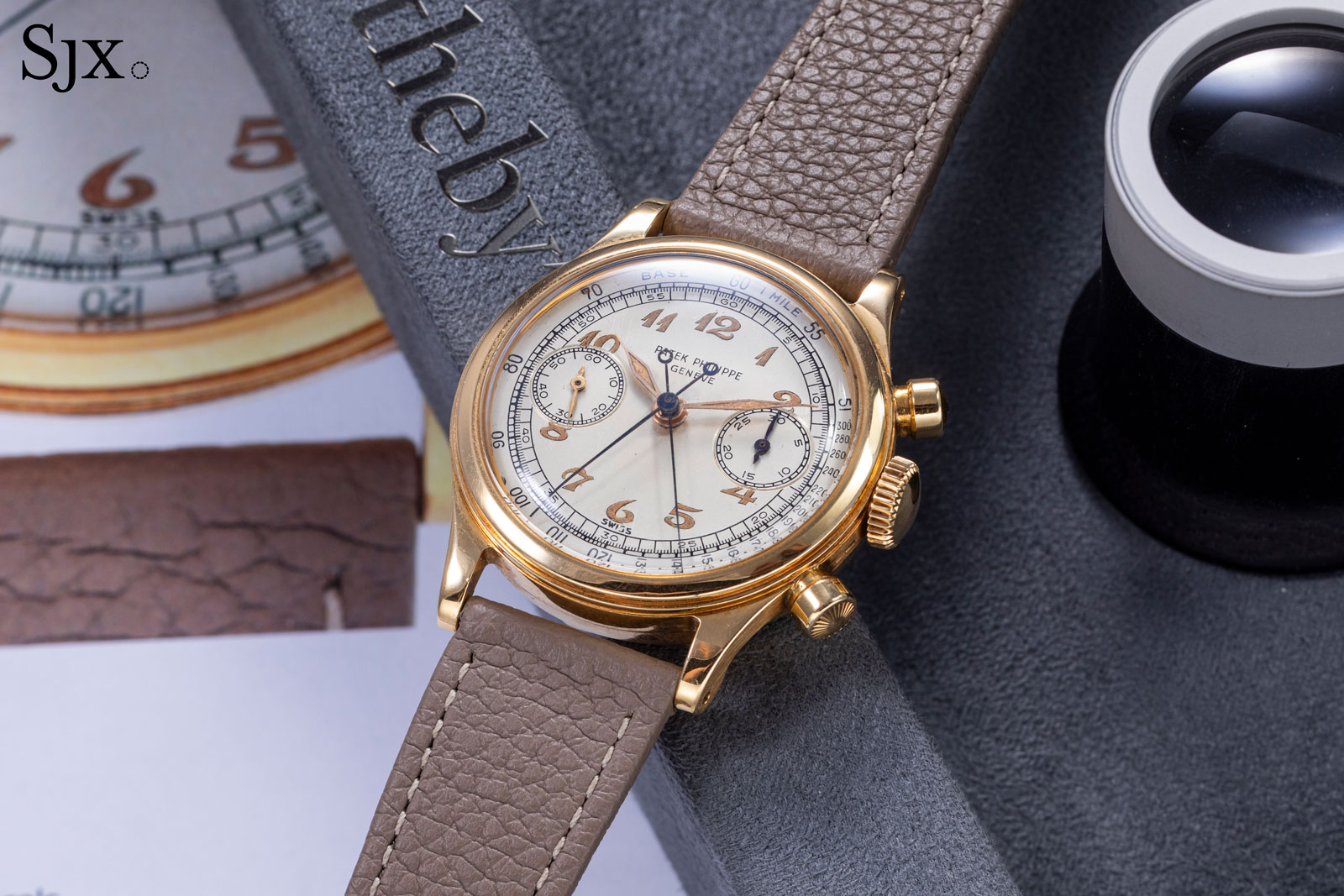
This example, however, is arguably more special than the Ellington watch. This ref. 1563 boasts luminous Breguet numerals, making it unique both literally and stylistically, turning it into a watch worth CHF3.36 million with fees, double what it last sold for back in 2013 at Christie’s.
Back to top.


